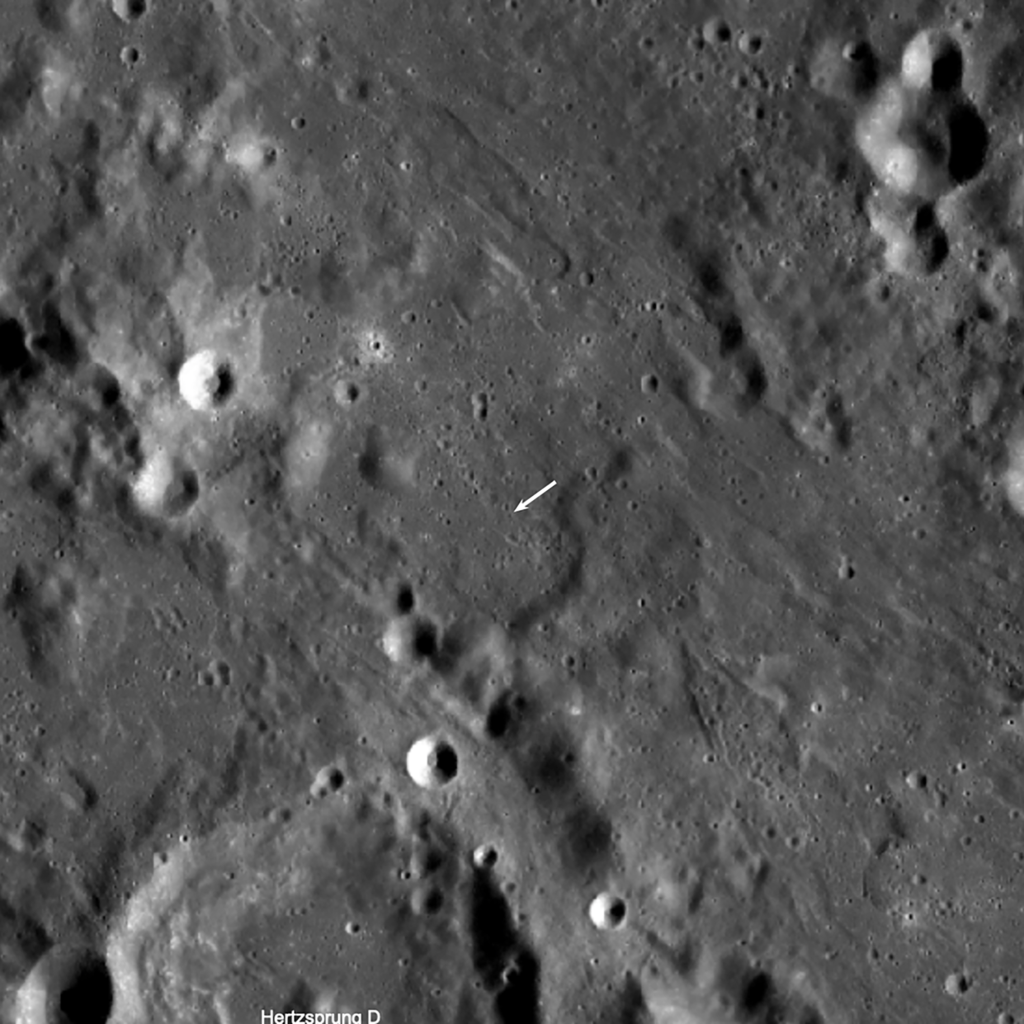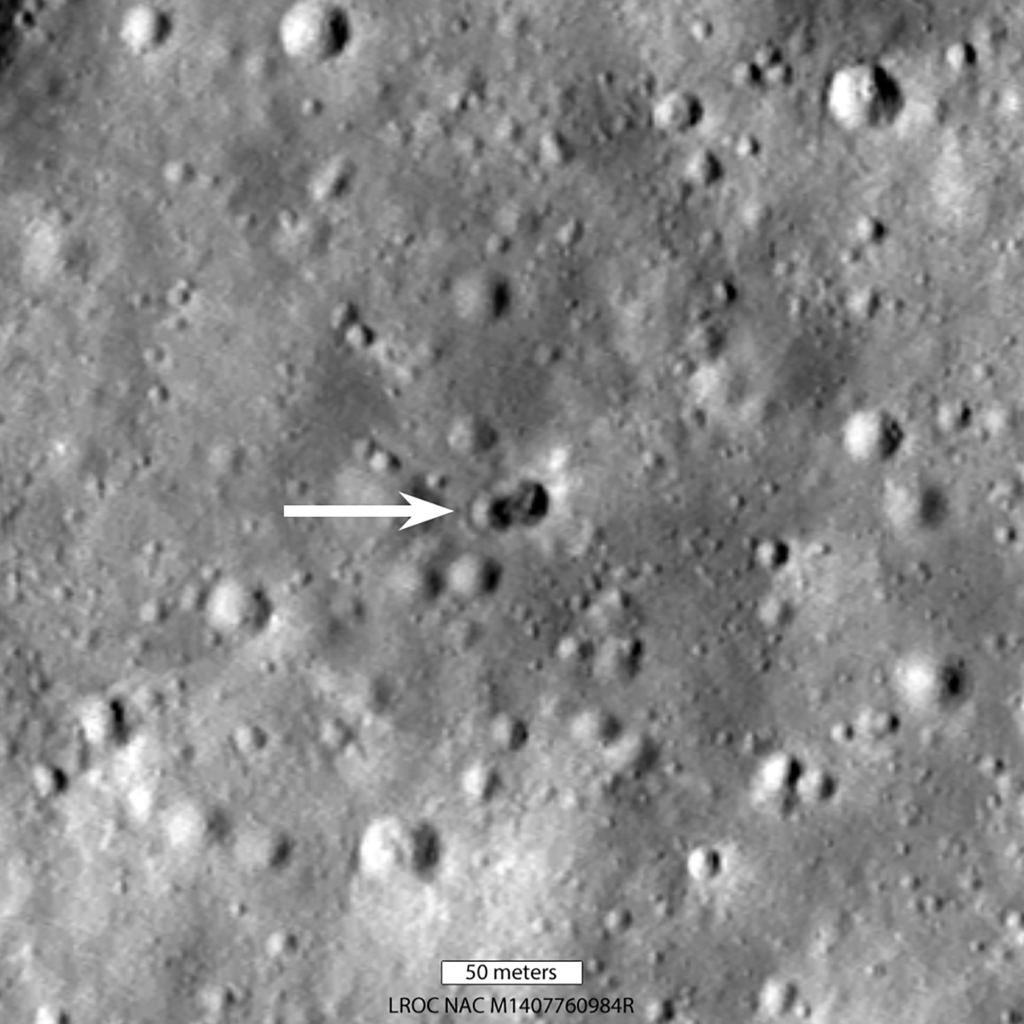NASA image of crashed ‘UFO’ on the moon spurs conspiracy theories
NASA has shared images of an unidentified spacecraft that crashed into the moon.
The snaps captured by the Lunar Reconnaissance Orbiter reveal that the impact left an unusual crater on the far side of the moon.
The images sent conspiracy theorists wild on social media, with some labeling them as proof of alien activity.
However, there’s a far simpler explanation: The divot was left by an out-of-control rocket.
Astronomers discovered the rogue rocket part late last year as it hurtled toward a lunar collision.
They believe that the schoolbus-size hunk of metal hit the rocky satellite’s surface in the early hours of March 4.
The origins of the rocket part remain a mystery. It was first thought to belong to SpaceX but was later pinned on China’s space agency.
NASA says images of the crash site — which produced a rare double impact crater — could help astronomers identify who’s responsible.
“The double crater was unexpected and may indicate that the rocket body had large masses at each end,” NASA wrote on June 24.
“Typically a spent rocket has mass concentrated at the motor end; the rest of the rocket stage mainly consists of an empty fuel tank.
“Since the origin of the rocket body remains uncertain, the double nature of the crater may indicate its identity.”

The lunar impact will have produced a cloud of debris but has not caused any serious damage.
It was the first time a manmade object has crashed into the moon without being aimed there.
According to NASA, the double crater it left behind is roughly 29 meters (95 feet) wide.
It’s made up of an 18-meter-wide (60-foot) divot overlapping another that spans roughly 16 meters (52 feet).
Images of the site could prove crucial to scientists hoping to get a better understanding of space collisions.
For now, the origins of the rocket part remain a mystery.

In January, astronomer Bill Gray reported that the junk was a SpaceX Falcon 9 upper stage launched from Florida in February 2015.
It was on a mission to deploy an Earth observation satellite called DSCOVR for the National Oceanic and Atmospheric Administration.
However, after receiving a tip from a NASA scientist, he later retracted his claim and said the rocket part most likely belonged to China.
“Back in 2015, I (mis)identified this object as 2015-007B, the second stage of the DSCOVR spacecraft,” Gray, who developed the asteroid-tracking software Project Pluto, said at the time.
“We now have good evidence that it is actually 2014-065B, the booster for the Chang’e 5-T1 lunar mission.”
Chang’e 5-T1 was an experimental spacecraft that lifted off in October 2014 in preparation for the Chang’e 5 lunar mission.
The mission was part of the Chinese Lunar Exploration Program that would eventually make it the third nation to touch down on the moon after the US and Soviet Union.
But China was having none of it, claiming a few days later that the upper stage of the mission safely burned up in the Earth’s atmosphere.
“According to China’s monitoring, the upper stage of the Chang’e-5 mission rocket has fallen through the Earth’s atmosphere in a safe manner and burnt up completely,” said Wang Wenbin, a spokesperson for China’s Ministry of Foreign Affairs.
However, experts noticed that China referred to the 2020 Chang’e-5 mission, not the similarly named Chang’e 5-T1 mission at the heart of the accusations. They are entirely different.
In March, Gray’s theory was backed up by the Us Space Command, which tracks near-Earth objects, after its astronomers confirmed that the Chang’e 5-T1 mission’s upper stage did not deorbit.
This story originally appeared on the Sun and was reproduced here with permission.
This article has been archived for your research. The original version from New York Post can be found here.


